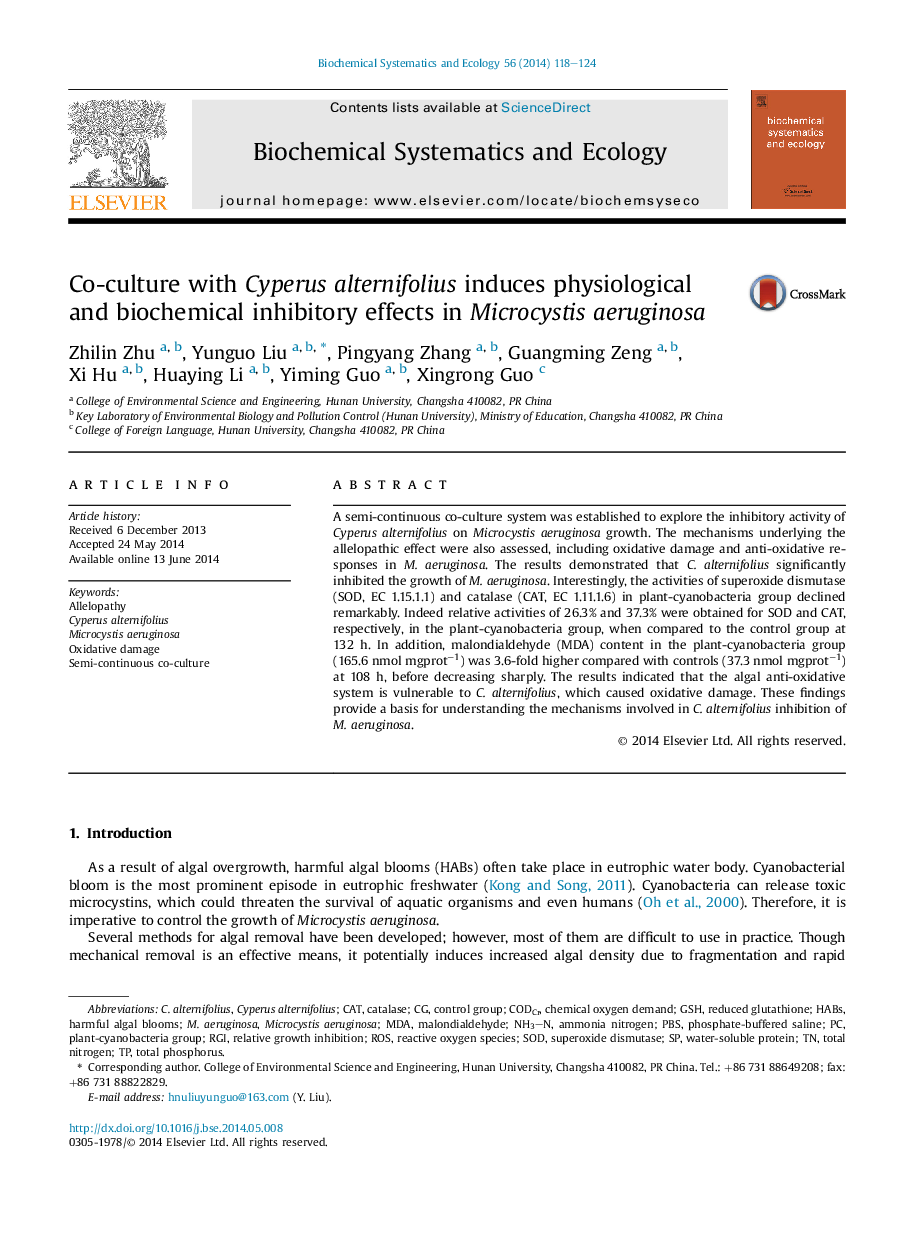| Article ID | Journal | Published Year | Pages | File Type |
|---|---|---|---|---|
| 1354055 | Biochemical Systematics and Ecology | 2014 | 7 Pages |
•A new emerged plant was chosen for inhibitory experiment on Microcystis aeruginosa.•A semicontinuous co-culture system was designed for simulating a natural environment.•An inhibitory effect was observed in the co-culture experiment.•We explored the inhibitory the mechanism and the possibility for practical application.
A semi-continuous co-culture system was established to explore the inhibitory activity of Cyperus alternifolius on Microcystis aeruginosa growth. The mechanisms underlying the allelopathic effect were also assessed, including oxidative damage and anti-oxidative responses in M. aeruginosa. The results demonstrated that C. alternifolius significantly inhibited the growth of M. aeruginosa. Interestingly, the activities of superoxide dismutase (SOD, EC 1.15.1.1) and catalase (CAT, EC 1.11.1.6) in plant-cyanobacteria group declined remarkably. Indeed relative activities of 26.3% and 37.3% were obtained for SOD and CAT, respectively, in the plant-cyanobacteria group, when compared to the control group at 132 h. In addition, malondialdehyde (MDA) content in the plant-cyanobacteria group (165.6 nmol mgprot−1) was 3.6-fold higher compared with controls (37.3 nmol mgprot−1) at 108 h, before decreasing sharply. The results indicated that the algal anti-oxidative system is vulnerable to C. alternifolius, which caused oxidative damage. These findings provide a basis for understanding the mechanisms involved in C. alternifolius inhibition of M. aeruginosa.
